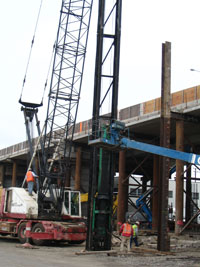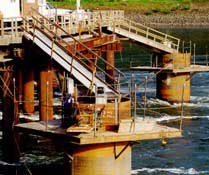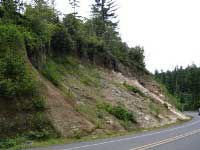Geotechnical Research
 |
The industry standard Wave Equation Analysis of Pile Driving program (GRLWEAP) is a common computer algorithm used to control pile driving stress, optimize accessories and estimate pile load bearing capacity while the pile is being driven. Starting in 2007, the FHWA required States to use the new AASHTO LRFD Bridge Design Specifications which is based on matching reliability probabilities of failure. It is widely believed that using the AASHTO LRFD default resistance factor results in significantly more conservative pile design than those prior to LRFD. This will result in much more expensive foundation costs for bridge construction. Dr Smith's research was to update and review the national databases, add new case histories and recalibrate the LRFD resistance factor for use with the GRLWEAP program matching ODOT practice at EOID and BOR. |
Improvements in soil structure interaction software came from monitored load tests such as these 10 foot diameter shafts (shown at right) at Bonneville Dam (shown at top right) for the US Corps of Engineers. Performance Confirmation of Constructed Geotechnical Facilities, Amherst, MA, 2000, ASCE |
 |
 |
Increased failures of the old Holocene and Pleistocene Dunes at the Oregon Coast are triggered by development and road widening. The geotech team, in collaboration with Prof. Peterson in Geology, developed innovative ways to more rapidly investigate and remediate sites based on insitu testing in the field. Improved measurement of soil properties led to very good predictions of the Woahink road failure (left) near Florence. |
All construction requires geotechnical engineering- from development of marginal sites in the Metro area, new bridges across the state to costal communities on fragile ancient Dunes. Oregon soils are unique and require Oregon funded research to improve Oregon design and practice |